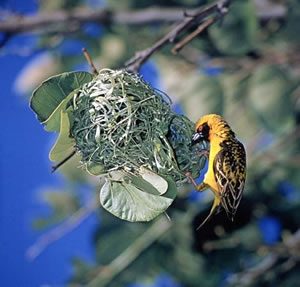 This is the first Web weaver blog we’ve done on our brand new website, we thought you might be curious as to how we came about the name “Web Weaver”. We decided to take the name after the industrious weaver birds common to Southern Africa well known for their creative nest building skills. We are not bird experts and don’t know a great deal about these little birds but like to believe we are as industrious as they are in weaving websites for our customers. So Web Weaver it is.Here is an extract from the “Encyclopaedia Britannica” you may find interesting:
This is the first Web weaver blog we’ve done on our brand new website, we thought you might be curious as to how we came about the name “Web Weaver”. We decided to take the name after the industrious weaver birds common to Southern Africa well known for their creative nest building skills. We are not bird experts and don’t know a great deal about these little birds but like to believe we are as industrious as they are in weaving websites for our customers. So Web Weaver it is.Here is an extract from the “Encyclopaedia Britannica” you may find interesting:
Weaver, also called weaverbird, any of a number of small finchlike birds of the Old World, or any of several related birds that are noted for their nest-building techniques using grass stems and other plant fibres. They are particularly well-known for their roofed nests, which in some African species form complex, hanging woven chambers. Many species of weavers are highly gregarious. In the true weaver family, Ploceidae (order Passeriformes), are the 57 species of the genus Ploceus, which are often divided under group names, such as masked weavers and golden weavers. All are small insectivores that breed colonially; most inhabit hot, dry country. The breeding male ploceine typically has bright yellow markings, is polygynous, and makes a nest that resembles an upside-down flask, with a bottom entrance, which may be a sort of tube. He attracts females by hanging upside down from the nest while calling and fluttering his wings. A familiar ploceine species in Africa is the village weaver (Ploceus, formerly Textor, cucullatus). The baya weaver (P. philippinus) is abundant from Pakistan to Sumatra.

Recent Comments